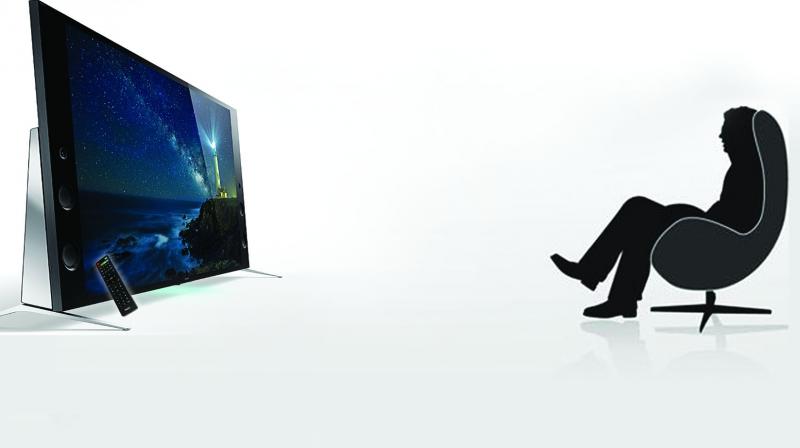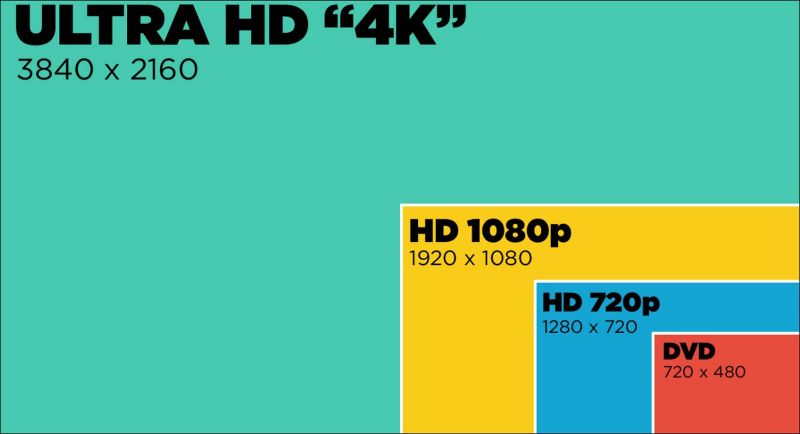Jargon jungle: What you need to know when buying a TV
Planning to buy a TV this Diwali? Here's a guide to the buzzwords they throw at you.

The Dussera sales were only starters. It looks like Diwali 2016, will see discount sellers make you a Godfather-like 'offer you can't refuse' when it comes to television sets.
But here's the rub: Competitive models cloak their offers in a cloud of jargon that will confound most lay buyers.
Here's a guide to the currently popular jargon, to help you decide what's best for you (and your budget):
Screen resolution: This decides how sharp the picture will be. The entry level these days is so-called HD or High Definition or 720p which means the set displays 720 lines in one pass. This is not full HD that is also called 1080p, and has 1080 lines of resolution. Most satellite dish TV providers offer dozens of channels in full HD and the difference is palpable — so better go in for a full HD set, especially if you are looking at 32-inch or more screen size. Even better resolution is Ultra HD, also called 4K because with 3840 lines it is about four times denser in resolution than 720 HD. If you want your TV to serve you for at least 5-7 years, consider 4K because by then, most content will be offered in full HD/4K, though currently there is little content to justify the asking price.
LCD/LED: All TVs use a liquid crystal or LCD screen. Almost all new sets in the last few years are so-called LED TVs, a misleading name since they are basically LCD sets but use a dense grid of LEDs pr Light Emitting Diodes, rather than individual lamps to shine light from the back on the LCD screen. LED-back-lit LCD TVs are lighter and make for lower electricity bills.
OLED: Organic Light Emitting Diodes don't need to be back lit because they provide their own illumination. This means, with no back panel of LEDS, the TV can be even slimmer and lighter. Difficult to believe, but an OLED TV -- even in the jumbo size of 55 inches and above-- can be as thin as 4-5 mm and you can easily lift and shift the TV single handed. However OLED has been a costly technology and LG is possibly the only company that offers a range of OLED TVs, possibly because it owns much of the underlying technology. OLED is bendable, so it has many makers in the smaller size required for mobile phone and wearables.
Quantum Dot TV: If you can't make large OLED, economically, you come up with other technologies to try and get a matching quality. This is what Samsung has done. Quantum dots are tiny crystals that glow when light falls on them and adding a layer of them in front of the back-lit LED panel, helps play catch up with self illuminating OLEDS. You can't achieve very thin TVs this way.
HDR: High Dynamic Range is a buzzword used by makers of UHD/4K sets and is supposed to be an upgrade that gives you more colours, more contrast, more brightness. Some TVs will call this Ultra HD premium. These are things that make for small competitive edge and frankly you will be hard put to see much difference.
Dolby Vision: If you thought Dolby was all about sound, think again. Dolby Vision is a licensed avatar of HDR, just like Dolby Surround Sound and some TV makers sport this brand of HDR.
Refresh Rate: This tells you how many times in a second, the image on the screen is refreshed. Current wisdom is: 60Hz or 60 times a second: not so good. 120Hz: good. 240Hz: great.
Aspect ratio: The ratio of screen width to height. The old tube TVs all came with a ration of 4:3. The new flat screen LCD/LED/OLEDs comes wider and shorter with a ratio of 16:9. All HD and 4K channels are automatically adjusted for 16:9. But a lot of non-HD channels still broadcast in the old 4:3 formats. The result is a familiar feeling: people on screen look fatter, shorter. But we live with the distortion because who wants to jump up and adjust every time one switches from HD to normal channel?
Things to ignore:
Curved screens: It was touted to get over the problem of LCD screens, where you couldn't watch from the edge of the screen. It added a lot of cost but little practical value. How often do you peer at the TV from the edge. Many early makers of curved TV have discontinued it.
3D TV: Forget it. It turned out to be flop technology. Who wants to wear glasses — and how many pairs can you pay for? Wait till they invent 3-D without specs.
-IndiaTechOnline


